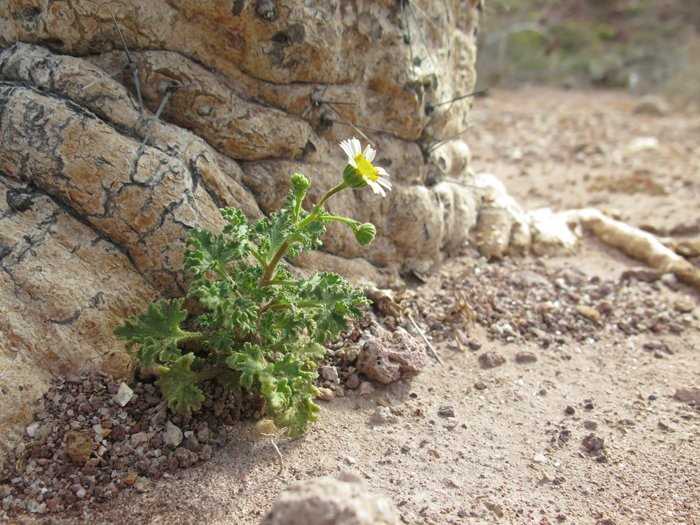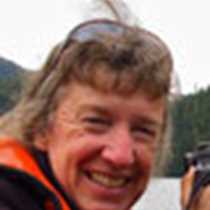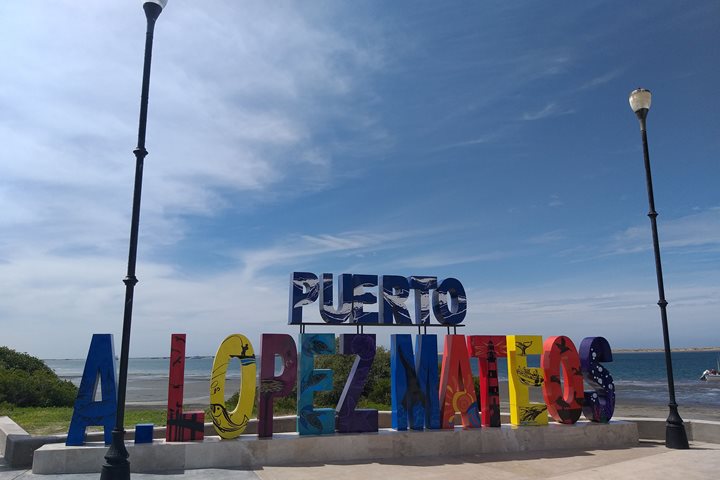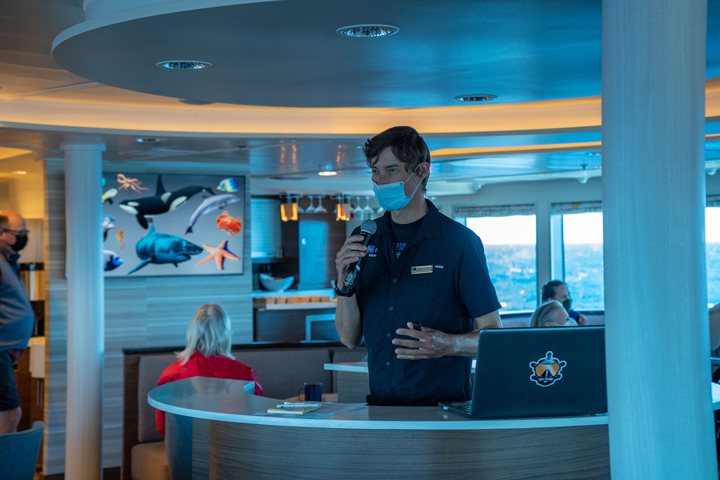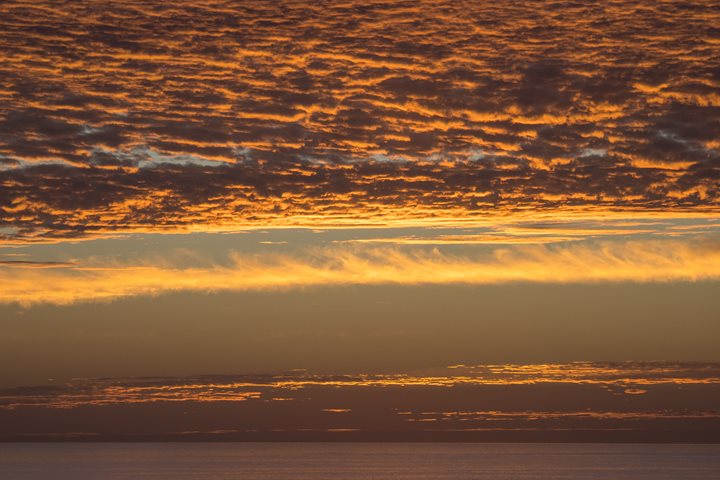Today we investigated the interface of the desert and the sea. At El Cardonal on Isla Partida the mangroves are literally just a few feet away from stately cardón and prickly cholla cacti. Some of us climbed the hillsides and were rewarded with magnificent views of the bay and the other side of the island. Kayaks and stand-up paddleboards were also options for those who wanted to explore more at water level. The denizens of the desert left many signs for us to discover. Ringtail cats, members of the raccoon family, had left tracks along the mangrove edges; jackrabbits had chewed extensively on the base of the cardón cactus; and crabs had drilled a multitude of holes all around the mangrove roots, shelters from desiccation and predators. For the afternoon we jumped into the water with California sea lions and time flew by as quickly as the sea lions did. We returned to the National Geographic Sea Bird with that “happy tired” feeling of a day well spent investigating the intricacies of the Sonora desert and the underwater realm of the Sea of Cortez.
2/25/2022
Read
National Geographic Venture
Port Lopez Mateos
This morning, National Geographic Venture docked at the interesting port, San Carlos. From the 1940s to the 1990s, the port was used for loading agricultural products and fertilizers from the nearby Santo Domingo Valley. Nowadays, San Carlos is basically a place for loading sardines from a local cannery. It is also an important tourist base for whale-watching, principally mating gray whales. At the port, all guests and staff boarded buses to Lopez Mateos, a town located near the northernmost tip of Magdalena Island. The buses traveled across Magdalena Plain, a section of the Sonoran Desert that receives a lot of moisture in the form of dense fog from the Pacific Ocean. Lichens and orchillas, a type of flowering plant, give the desert a phantasmagoric appearance. Guests and staff enjoyed spotting numerous birds, including crested caracaras and kestrels. Once in Lopez Mateos, we boarded local pangas for whale-watching. During two rounds of whale-watching, we encountered several whales close to our pangas. However, most of the whales were preoccupied with traveling, searching for mates, or just finishing their time of reproduction and thus exiting the lagoon. In reality, the whales were not interested in interacting with the boats and their excited cargo, but we had many opportunities to observe the behavior of these magnificent animals. In town, we all delighted in a delicious fish lunch, ‘pescado zarandeado.’ We enjoyed exploring the local dock with its many colorful shops and crafts, and we admired the wonderful sculpture of a cow-calf pair of gray whales.

